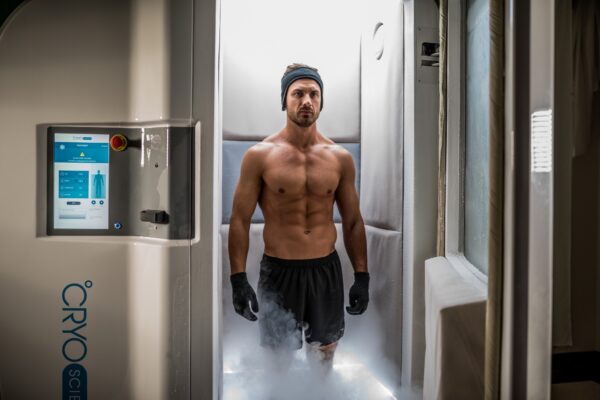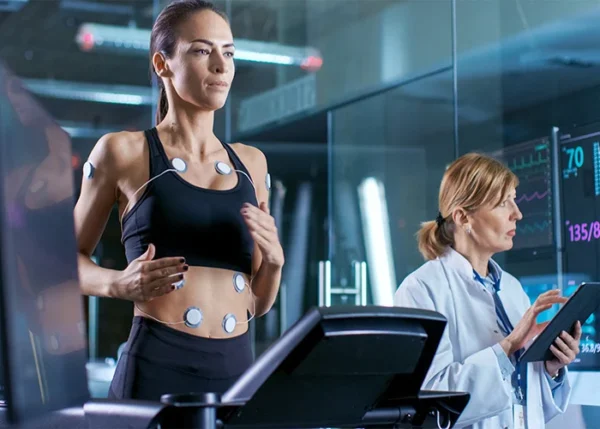
In the ever-evolving landscape of fitness, a significant shift has occurred as people increasingly recognize the profound impact of recovery and wellness on their overall well-being. This paradigm shift is not only transforming individual health practices but is also reshaping the very fabric of the fitness industry. From high-intensity workouts to recovery and rejuvenation, the holistic approach to fitness is gaining momentum, with gyms and fitness studios leading the charge.
Understanding the Importance of Recovery
Beyond the intensity of workouts, recovery has emerged as a crucial component of a well-rounded fitness routine. Recognizing the need for balance, individuals are prioritizing recovery to enhance performance, prevent injuries, and promote overall health. This awareness has sparked a revolution in the fitness industry, where recovery is not merely an afterthought but an integral part of the fitness journey.
Diversification of Fitness Services
Gone are the days when fitness centers solely focused on strenuous workouts. The current trend sees gyms and studios diversifying their offerings to include an array of recovery and wellness services. These services go beyond the conventional, embracing innovative approaches like cryotherapy, infrared saunas, and massage therapy to address both physical and mental recovery.
Cryotherapy: Chilling for Healing
Cryotherapy, the practice of exposing the body to extremely cold temperatures for short periods, has gained popularity for its potential benefits in reducing inflammation, relieving muscle soreness, and even boosting metabolism. Fitness enthusiasts are turning to cryotherapy chambers as a cutting-edge method to expedite recovery and optimize their performance.
Infrared Saunas: The Warmth of Well-Being
Infrared saunas, with their gentle heat penetrating the body, have become a favored choice for recovery. Beyond relaxation, these saunas are believed to promote detoxification, improve circulation, and alleviate muscle tension. The embrace of infrared saunas in fitness studios reflects a commitment to holistic well-being.
Massage Therapy: Healing Hands for Holistic Health
Massage therapy, a timeless practice, has found a new home in fitness centers. Beyond being a luxurious indulgence, massages are recognized for their therapeutic benefits, promoting muscle recovery, reducing stress, and enhancing flexibility. The integration of massage therapy into fitness services is a testament to the industry’s dedication to comprehensive wellness.
The Future of Fitness
As recovery and wellness services continue to weave themselves into the fabric of the fitness industry, we witness the emergence of a more comprehensive and holistic approach to health. The future of fitness lies not only in the intensity of workouts but in the thoughtful integration of recovery practices that nurture the body, mind, and spirit.
In this transformative era, where recovery is no longer a luxury but a necessity, fitness enthusiasts are not just sculpting their bodies—they’re cultivating a lifestyle of holistic well-being. The gyms and fitness studios of today are not just spaces for sweat and exertion; they are sanctuaries for recovery, rejuvenation, and the pursuit of optimal health. Embrace the revolution—where fitness is not a race but a journey towards holistic vitality.
In a world where the pursuit of well-being often revolves around numbers—reps, sets, calories burned—it’s time to redefine our understanding of fitness. Welcome to the era where fitness transcends the mundane and transforms into an immersive experience. This blog explores the paradigm shift towards viewing fitness not just as a routine but as a journey—a holistic, sensorial, and deeply personal experience that goes beyond the confines of the gym.
The Evolution of Fitness: From Routine to Ritual
Gone are the days when fitness was a mere checklist of exercises. The contemporary approach embraces fitness as a ritual—a purposeful and dynamic experience that extends beyond the walls of a gym. It’s about intentional movement, mindful choices, and the integration of well-being into the fabric of daily life.
Mindfulness in Motion: The Present Moment Workout
The concept of mindfulness is seeping into every aspect of our lives, and fitness is no exception. The present moment workout is about immersing oneself fully into the exercise—feeling the muscles engage, savoring each breath, and relishing the rhythm of movement. In this experience-driven fitness journey, mindfulness becomes the guiding force, fostering a deeper connection between the mind and body.
Bridging Fitness and Fun: The Playful Workout
The rise of experiential fitness brings an element of playfulness to the workout routine. From dance-inspired classes to obstacle course challenges, fitness becomes an adventure—an opportunity to play, explore, and rediscover the joy of movement. This shift acknowledges that exercise doesn’t have to be a chore; it can be an exhilarating and enjoyable experience.
The Sensorial Gym Experience: Engaging the Senses
Experiential fitness engages all the senses, creating a sensorial symphony that elevates the workout experience. Whether it’s the aroma of essential oils in a yoga studio, the rhythmic beats of a curated playlist, or the tactile sensation of outdoor trail running, fitness becomes a multisensory journey that enlivens the spirit.
Community Connection: Social Fitness Experiences
Fitness is no longer a solitary pursuit; it’s a communal experience. The emergence of group workouts, fitness events, and online communities fosters a sense of connection and shared purpose. The social aspect of fitness becomes a driving force, transforming it from an individual endeavor into a collective journey.
The Wellness Fusion: Blurring Boundaries
Experiential fitness blurs the boundaries between traditional wellness practices. It’s not just about lifting weights or running miles; it’s about embracing a holistic approach that includes yoga, meditation, and nutritional mindfulness. The fusion of wellness practices creates a comprehensive and integrated experience that nurtures the body, mind, and soul.
Embarking on Your Fitness Odyssey
As we embrace the concept of fitness as an experience, it’s an invitation to embark on a personal odyssey—one that transcends the rigid confines of routine and embraces the dynamic, the mindful, and the joyful. Whether you find solace in the rhythmic flow of a dance class, the serenity of a yoga session, or the camaraderie of a group workout, remember that your fitness journey is uniquely yours. It’s a celebration of movement, an exploration of self, and a holistic experience that extends far beyond the parameters of sets and reps. So, lace up your sneakers, embrace the sensory richness of your workout, and let fitness become a transformative and joyous journey.


As we age, our bodies undergo a complex interplay of processes that contribute to the overall aging phenomenon. Scientists have identified twelve key mechanisms that play a role in this intricate process. Understanding these mechanisms and adopting healthy lifestyle strategies can potentially mitigate their effects and promote healthier aging.
Let’s dive deeper into each mechanism of aging and explore some healthy strategies that might help combat these issues:
- Genomic Instability: This refers to damage in DNA, which can lead to mutations and cellular dysfunction. To mitigate this, a healthy lifestyle involving a balanced diet, regular exercise, and minimizing exposure to harmful environmental factors like radiation and toxins can be beneficial. Antioxidants found in fruits and vegetables might help reduce DNA damage by neutralizing free radicals.
- Telomere Attrition: Protecting telomeres is crucial. Lifestyle habits that support telomere health include managing stress through meditation or mindfulness, regular exercise, and consuming a diet rich in antioxidants and omega-3 fatty acids. Some studies suggest that activities like yoga and meditation may positively impact telomere length.
- Epigenetic Alterations: Maintaining a healthy lifestyle with proper nutrition, exercise, and stress management can positively influence gene expression. Additionally, some research suggests that certain foods, like those rich in folate and other methyl-donating compounds, might help maintain healthy epigenetic patterns.
- Loss of Proteostasis: Regular exercise and a balanced diet can support the body’s ability to maintain proper protein structure and function. Including protein-rich foods, maintaining hydration, and managing chronic inflammation can also aid in proteostasis.
- Deregulated Nutrient Sensing: Caloric restriction and intermittent fasting have been linked to improved nutrient sensing pathways. Consuming a balanced diet and maintaining a healthy weight can also help regulate nutrient sensing mechanisms.
- Mitochondrial Dysfunction: Regular exercise has been shown to improve mitochondrial function. Additionally, consuming a diet rich in antioxidants and nutrients that support mitochondrial health (such as coenzyme Q10, found in nuts and seeds) might be beneficial.
- Cellular Senescence: While currently, there’s no direct way to eliminate senescent cells, maintaining a healthy lifestyle can delay their accumulation. Regular exercise and consuming anti-inflammatory foods may help mitigate cellular senescence.
- Stem Cell Exhaustion: Exercise has been shown to increase the number and activity of stem cells. Additionally, certain dietary components, like resveratrol found in red grapes, might support stem cell health.
- Altered Intercellular Communication: Consuming a diet rich in anti-inflammatory foods and maintaining a healthy weight can support proper intercellular communication. Regular exercise has also been linked to improved cell signaling.
- Dysregulated Nutrient Sensing: Similar to deregulated nutrient sensing, strategies like caloric restriction and intermittent fasting may help regulate nutrient sensing pathways. Consuming a balanced diet with adequate nutrients also supports healthy nutrient sensing.
- Accumulation of Senescent Cells: Research is ongoing to find ways to eliminate senescent cells. While direct methods are still developing, lifestyle habits like regular exercise and a healthy diet might help delay the accumulation of these cells.
Conclusion
While these strategies show promise in supporting healthy aging, it’s important to remember that aging is a complex process. Consulting healthcare professionals before making significant lifestyle changes is advisable. By understanding these mechanisms and adopting healthy habits, we can potentially positively influence the aging process and lead healthier lives.
Remember, aging is a natural process, but adopting a healthy lifestyle can significantly impact how we age and the quality of our later years.
